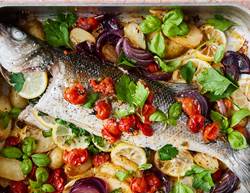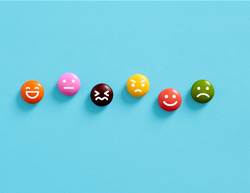Pick the freshest fish.
Seafood markets tend to have a pretty characteristically fishy scent—but really, the freshest seafood shouldn't smell. Nor should it be packed away for a long period of time before it gets to you. Check for these characteristics to make sure the seafood you're buying is as fresh as possible:
Fish should smell fresh with a mild scent, not fishy or sour
Eyes should be clear
There should be no discolouration or drying around the edges of fish fillets
Fresh shrimp should be shiny and translucent with little or no odour
Shellfish should not have any cracked or broken shells
Live shellfish should have tags or labels in their containers with specific information about the product and processor (this means they were harvested according to national shellfish safety controls)
Frozen fish packages shouldn’t have signs of ice crystals or frost (a sign it has been stored for a long time, or thawed and refrozen)
Avoid mercury.
Particularly dangerous for pregnant women and young children, mercury is a neurotoxin that can damage the nervous system and disrupt normal brain function. The higher a fish is on the food chain, the more mercury it likely has. This list of select good choices can help you decide how much of each fish to eat per week. Aim for two to three servings of “Best Choices” fish each week, or one serving from the “Good Choices” category.
Best Choices: Atlantic mackerel, black sea bass, catfish, clam, cod, crab, herring, lobster, oyster, pacific chub mackerel, salmon, sardine, shrimp, tilapia, freshwater trout, tuna (canned light)
Good Choices: Chilean sea bass, halibut, mahi mahi, monkfish, snapper, tuna (albacore/white tuna), tuna (yellow fin)
Choices to avoid: King mackerel, marlin, orange roughy, shark, swordfish, bigeye tuna
Buy sustainably raised fish.
It’s not always easy to know how your fish was raised, or if it was given antibiotics that contribute to drug resistance. Follow these tips to find the most responsibly raised seafood, and feel confident in your purchase.
Inspect the country of origin: Wild-caught or farmed seafood is typically less toxic and more sustainable (meaning seafood isn’t overfished) than many other countries. To avoid antibiotics, which can contribute to drug-resistant bacteria, seafood from countries like Norway (which has strict regulations for antibiotic use) and Iceland (where cold water eliminates the need for antibiotics) is also a good choice. Pass on fish from countries with looser seafood regulations, such as China, Thailand, Vietnam, or Indonesia.
Shop at responsible stores: Places that have high sustainability standards verified by third-party organisations, and can trace their seafood back to its source should be at the top of our list.
Check your fish: Look out for products that have 'responsibly fished' or 'pole and line' on thier labels. for more information visit sustainableseasfood.org.au.
Remember, seafood can be an integral part of a healthy lifestyle—if you know the right kind to buy.
© prevention.com
First published:
22 Dec 2017










